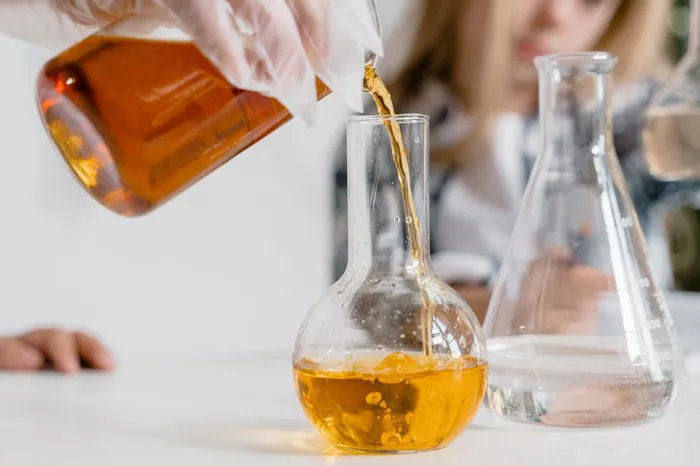In the realm of alcoholic beverages, beer stands out as a popular choice for many, offering a diverse range of flavors and styles to suit various palates. Beyond its reputation as a social lubricant, beer has been a subject of interest for health enthusiasts, with some speculating about its potential vitamin content. In this article, we delve into the question that has intrigued many: which beer has the most vitamins?
Understanding Beer Composition and Vitamins
Before delving into which beer boasts the highest vitamin content, it’s essential to understand the typical composition of beer and the role of vitamins within it. Beer primarily consists of water, malted barley, hops, and yeast. Each component contributes to the flavor, aroma, and nutritional profile of the final product. When it comes to vitamins, beer can contain various B vitamins, including niacin (B3), riboflavin (B2), thiamine (B1), and folate (B9), as well as small amounts of vitamin E and vitamin K.
Factors Affecting Vitamin Content in Beer
Several factors influence the vitamin content of beer, making it challenging to determine definitively which type contains the most. The brewing process itself plays a significant role in determining the final nutrient profile of the beer. For example, the choice of malted barley and hops, as well as the fermentation conditions, can impact the concentration of vitamins in the finished product. Additionally, the presence of adjuncts such as fruits, herbs, or spices in certain beer styles may contribute additional vitamins to the brew.
Analyzing Beer Styles and Vitamin Content
When considering which beer has the most vitamins, it’s essential to examine different beer styles and their respective nutrient profiles. While all beers contain some vitamins, certain styles may offer higher concentrations due to their ingredients and brewing methods. For instance, beers brewed with a higher proportion of malted barley are likely to have more B vitamins, as barley is a natural source of these nutrients. Likewise, beers made with adjuncts like fruits or grains can provide additional vitamins depending on the ingredients used.
See Also: sancerre flavor profile
Comparing Light vs. Dark Beers
One common distinction among beers is the color, with options ranging from light lagers to dark stouts and porters. This color variation is primarily due to differences in the malt used during the brewing process. When it comes to vitamin content, both light and dark beers can offer essential nutrients, but their profiles may vary. Dark beers, such as stouts and porters, often contain higher levels of certain B vitamins, thanks to the roasted malt used in their production. On the other hand, light beers may contain more niacin due to the use of pale malts.
Exploring Craft vs. Commercial Beers
Another consideration when evaluating the vitamin content of beer is the distinction between craft and commercial varieties. Craft breweries typically focus on quality ingredients and traditional brewing methods, often resulting in beers with more complex flavors and potentially higher nutrient levels. In contrast, commercial breweries may prioritize efficiency and consistency, which can sometimes lead to a more standardized product with fewer variations in nutrient content. However, both craft and commercial beers can contribute to overall vitamin intake, depending on the specific beer style and brewing techniques employed.
The Role of Yeast in Beer Nutrition
Yeast plays a crucial role in the fermentation process that transforms wort into beer. Aside from producing alcohol and carbonation, yeast also contributes to the nutritional profile of beer. Brewer’s yeast, the type commonly used in beer production, is a rich source of B vitamins, particularly B vitamins like riboflavin, niacin, and folate. During fermentation, yeast metabolizes sugars and other compounds present in the wort, releasing these vitamins into the final product. As a result, beers with higher yeast content may offer increased levels of certain vitamins.
Considering Alcohol Content and Nutrient Absorption
While beer can provide essential vitamins, it’s essential to consider how its alcohol content may affect nutrient absorption and utilization in the body. Alcohol consumption, particularly in excess, can interfere with the absorption of certain vitamins and minerals, potentially leading to deficiencies over time. Additionally, the calories and carbohydrates present in beer can impact overall nutritional balance when consumed in large quantities. Therefore, moderation is key when incorporating beer into a balanced diet to reap its potential nutritional benefits without adverse effects on health.
Conclusion: Deciphering the Vitamin Content of Beer
In conclusion, determining which beer has the most vitamins is a complex endeavor influenced by various factors, including brewing techniques, ingredients, and beer styles. While all beers contain some vitamins, certain styles may offer higher concentrations of specific nutrients due to their composition and production methods. Dark beers tend to be richer in certain B vitamins, while craft beers may provide a more diverse array of vitamins compared to their commercial counterparts. Ultimately, incorporating beer into a balanced diet in moderation can contribute to overall nutrient intake, but it should not be relied upon as a primary source of vitamins. By understanding the nuances of beer composition and its potential nutritional benefits, enthusiasts can make informed choices about which brews best suit their preferences and dietary needs.


